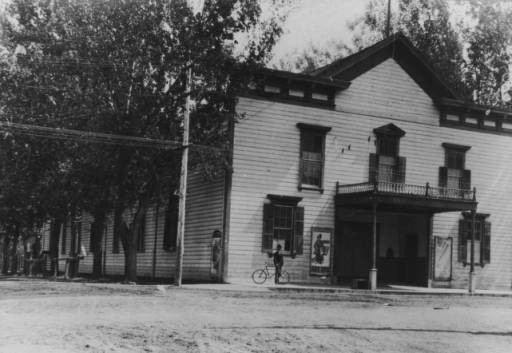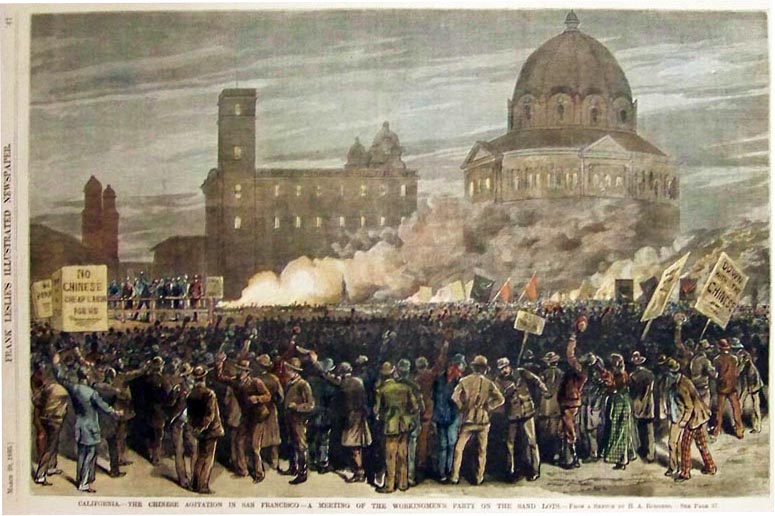
Date of Organization: 29 April 1875
Reorganized: 15 February 1890 [1].
Inclusive dates of units papers at State Archives: None
Geographical Location or Locations: Chico, Butte County
a. Organization Papers None
b. Bonds None
c. Correspondence None
d. Election Returns None
e. Exempt Certificates, None
f. Muster Rolls, None
g. Oaths Qualifications None
h. Orders None
i. Receipts, invoices None
j. Requisitions None
k. Resignations None
l. Target Practice Reports None
m. Other None
Hiram T. Batchelder, First Lieutenant: : Elected 30 April 1875, commissioned 28 May 1875, reelected 24 April 1877 and 30 April 1879
W. R. Williams , First Lieutenant: Elected 22 December 1879, commissioned 13 January 1880, reelected in 1881 and 1883.
C. S. Coggins, First Lieutenant: Elected 11 July 1885, commissioned 7 August 1885
R. M. Jones, Captain: Elected 26 March 1887, commissioned 23 May 1887.
C. B. Swain, First Lieutenant: Elected 26 March 1887, commissioned 23 May 1887.
C. B. Swain, Captain: Elected 26 March 1889, commissioned 7 June 1889.
J. H. Gunley, First Lieutenant: Elected 26 March 1889, commissioned 7 June 1889.
The Chico Guard was organized and mustered into the service of the State , May 18, 1875 . William T. Turner , Captain, and Hiram T. Batchelder, First Lieutenant , were the elected officers. The unit was armed with Springfield Rifles , caliber 45 (breech loaders) and uniformed in accordance with the military regulations. This new company gave every indication of becoming one of the most efficient and dependable units in the National Guard. Prior to the formation of a new Battalion in 1890, the armory of the Chico Guard was destroyed by fire . Little of the State's property was injured and the company's loss was small as the unit carried ample insurance. The new Battalion consisted of five companies, and was designated as the Eighth Battalion of Infantry.[2] In 1895, when the National Guard was reorganized , Companies A and F of the 8th Infantry Battalion of Chico were consolidated and designated as Company A, 2nd Infantry Regiment.[3]
After its organization the Guard participated in varied activities . One of these was the reviewing of the troops by Major General Vernon, when the Brigade to which the corps was attached paraded for the celebration of the anniversary of Washington's Birthday, February 22, 1876. Another interesting event was the Field Day activities at the Presidio in San Francisco on July, 3, 1876. The Commander-in-Chief , his staff, Major General and his staff, and thirty thousand people witnessed the evolutions of the Brigade . A sham battle concluded the impressive display of the military maneuvers of the day. The Fourth of July procession of 1876, in honor of the centennial was well attended despite the previous day's strenuous activities. Other functions in which the company took an active part during that year were the reception of Major General Irwin McDowell , United States Army, Commanding the Military Division of the Pacific; the annual muster of troops required by law; and the commemoration of California's admission as a State .
Encampments were always a source of keen interest and were well attended by the members of the Chico Guard. Their desire for military efficiency was always apparent from the gratifying reports of the authorities after these events . In 1889, the Chico Guard and the Colusa Guard encamped together at Camp Montgomery for seven days. The camp was named for J . W. B. Montgomery, commanding the Fifth Brigade, National Guard of California . Another encampment was attended by the unit from July 18 to 26, 1890, at Camp Allen, Santa Cruz.
In July 1877, when news of the labor riots throughout the country, especially in Pittsburg, Pennsylvania, where the toll of life and property was heaviest, reached San Francisco, similar disturbances were expected to occur in this State. The trouble was directed particularly against the Chinese, and the white population held meetings denouncing the Orientals and threatened attacks on the Chinese quarters. The authorities felt that the small number of policemen, one hundred and twenty in all, would be an insufficient force to quell the strike sympathizers who had formed themselves into groups bent on destruction. Therefore, they issued ammunition to the military companies and ordered them to hold themselves in readiness to aid the police immediately if the situation proved beyond civil control. The Chico Guard, which was in San Francisco at the time, received five hundred rounds of ammunition, and Captain Turner was placed in command of the corps.

The Chinese Labor trouble was the last major activity in which the Chico Guard participated prior .to the unit becoming attached to the Eighth Infantry Battalion, February 15, 1890. On this date a new battalion consisting of five companies was organized and designated as the Eighth Battalion of Infantry, Fifth Brigade. The Chico Light Guard, unattached, became Company A, Eighth Infantry, Fifth Brigade.[5]
3. Adjutant General Report 1895-1896, page 27.
5. Adjutant General Report 1890, pages 4 , 56.
Posted 31 December 2014.